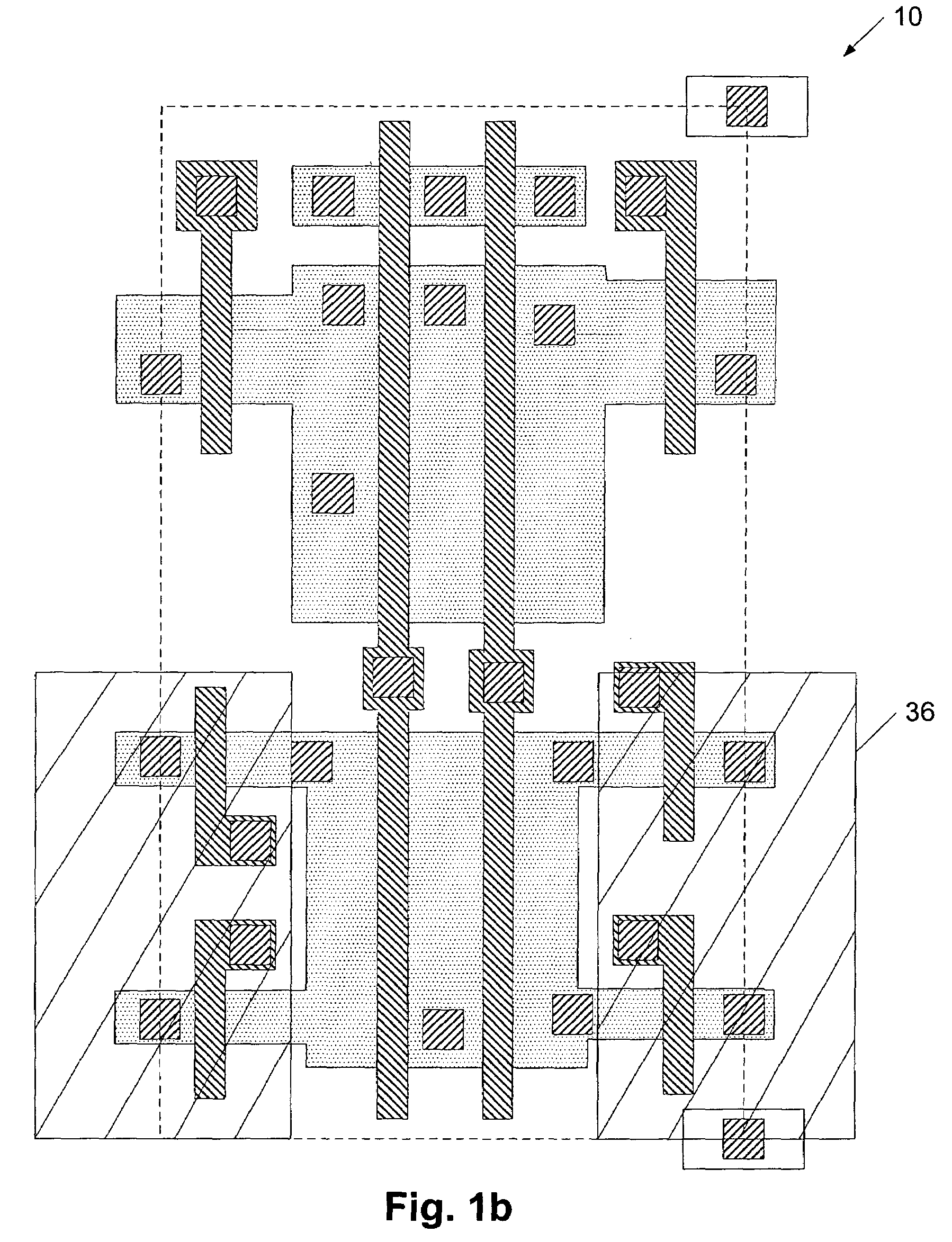Basic cell architecture for structured application-specific integrated circuits
a cell-based integrated circuit and integrated circuit technology, applied in the field of integrated circuits, can solve the problems of low cost, low layout efficiency, and low cost, and achieve the effect of reducing the number of recurring expenses, avoiding recurring costs, and avoiding recurring costs
- Summary
- Abstract
- Description
- Claims
- Application Information
AI Technical Summary
Benefits of technology
Problems solved by technology
Method used
Image
Examples
Embodiment Construction
[0023]Turning to the drawings, FIG. 1a illustrates an exemplary plan view of basic cell architecture 10 having a plurality of transistors, which may serve as a repeatable base pattern of fixed layers for a structured ASIC. In particular, basic cell architecture 10 illustrates a layout of a plurality of transistors dimensionally configured and arranged such that when replicated within an array of cells, the plurality of cells form a building block for subsequent formation of logic circuitry and / or memory circuitry with overlying variable layers. The memory circuitry may include any memory technology that can receive written logic values and transmit read logic values that are stored in the interim, such as SRAM, DRAM or non-volatile technologies. The logic circuitry may include any logic circuitry, such as but not limited to NAND gates, NOR gates, XOR gates, AOIs, registers, and flip flops. As noted above, the fixed layers of structured ASIC do not change across a wafer and, thus, do...
PUM
 Login to View More
Login to View More Abstract
Description
Claims
Application Information
 Login to View More
Login to View More - R&D
- Intellectual Property
- Life Sciences
- Materials
- Tech Scout
- Unparalleled Data Quality
- Higher Quality Content
- 60% Fewer Hallucinations
Browse by: Latest US Patents, China's latest patents, Technical Efficacy Thesaurus, Application Domain, Technology Topic, Popular Technical Reports.
© 2025 PatSnap. All rights reserved.Legal|Privacy policy|Modern Slavery Act Transparency Statement|Sitemap|About US| Contact US: help@patsnap.com



